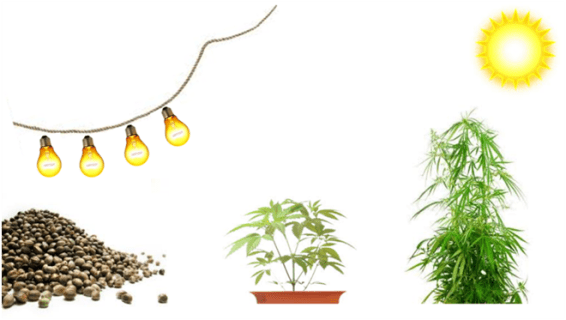 Having a marijuana calendar and checklist helps growers to know what they need to prepare for and when to do it. The checklist creates a necessary routine for the process of growing.
Having a marijuana calendar and checklist helps growers to know what they need to prepare for and when to do it. The checklist creates a necessary routine for the process of growing.
After a few cycles of growing, you will know better what to do, and when to do it, and then adapt your way of growing. Savvy growers read and consider every point on the marijuana calendar weekly, making sure they are on point and have not forgotten anything.
Great growers have taken advice from other smart growers and adapted to different techniques and methods of growing by finding what works best for them. Growers should spend at least 10 minutes per day, per lamp on indoor grows to have a productive garden.
If you are using hydroponics, aeroponics, or CO2 enrichment, you will need to spend an additional 20 minutes or so to take care of system maintenance throughout your marijuana calendar. When growing marijuana there will be large amounts of time will be spent setting up the grow room, harvesting, cleaning out the room, and replanting your next crop.
Weekly Marijuana Calendar Checklist
- Air ventilation working properly
- Air circulation working properly
- Humidity Level: 45 – 50 percent
- Temperature: Day 70 – 75°F (21 – 24°C); Night 55 – 60°F (13 – 16°C)
- Soil Moisture (dry pockets); water as needed
- Cultivate soil surface
- Check pH
- Rotate (turn) plants
- Check for spider mites and other insects under leaves
- Check for fungi
- Check for nutrient deficiencies
- Regular fertilization schedule
- Check the light system for excessive heat at; the plugin, timer, ballast, and near the ceiling
- Clean up!
- Check walls and ceiling for mold
- Move the lamp up to 12 – 36 inches above plants
Marijuana Calendar

The marijuana calendar is a three-month-long cycle that goes through two (2) weeks for clones to root then two (2) weeks of vegetative growth and eight (8) weeks of flowering. Depending on what cannabis variety you are growing the flowering cycle could be longer.
A grower who is growing using either CO2 enrichment or hydroponics can typically move the cycles on this calendar up one (1) week. This indoor marijuana calendar can be started on any day of the year that you choose.
Be sure to remember that light intensity diminishes over four (4) feet from the bulb and results will vary.
First Month – Week 1
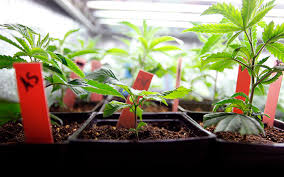 The first week in the first month of your marijuana calendar is when you will either sow your seeds or clone from a mother and root them inside of a humidity dome. This process will take 1 – 4 weeks though usually within two (2) weeks they will be ready.
The first week in the first month of your marijuana calendar is when you will either sow your seeds or clone from a mother and root them inside of a humidity dome. This process will take 1 – 4 weeks though usually within two (2) weeks they will be ready.
During this first couple of weeks, after you have sown your seeds or cloned, you will need to prepare your soil mixture (combination of dolomite lime and soil) or set up your hydroponic systems and your growing area for the vegetative cycle with lighting timers set to 18-hour days and 6-hour nights.
First Month – Week 3
The week three (3) from starting you will need to have everything in place and ready to go in your vegging room. You will transplant your clones rooted into a new container or hydroponics system and place them in your vegging room and set the lights 24 – 36 inches above your plants.
At this point, you will begin fertilizing your plants starting with a 50% diluted solution and then building up from there. Be sure that the plants are well watered, but not drenched yet continue watering and fertilizing when needed.
Second Month – Week 5
At week five (5) your plants will be around 6 – 12 inches tall with lush green foliage and stems. You will continue to fertilize as you have been, but you can add the full-strength fertilizer to your watering.
Next, move your lights down to 12 – 36 inches from the tops of the plants to increase their lighting so that they will better to be able to handle it than before. If you need to you can thin and transplant your plants.
Second Month – Week 7
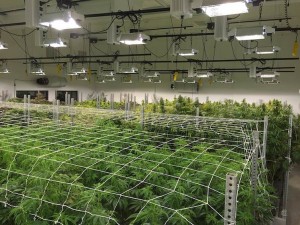
At this point, you can either move your vegetative plants into the flowering room or change the lighting cycle in the room that is in now to a 12-hour flowering light cycle. Around this time, your plants should be around 12 – 24 inches tall.
If any of your plants are showing signs of yellowing or burning then you will need to change your fertilizing habits to increase and/or decrease if burning. In the flowering cycle, you will need to change the fertilizer that you are using.
If you are using a hydroponics setup then you will drain out the reservoir, and re-fill the system up with fresh water and nutrients. In soil, you will merely change the fertilizer/watering mix.
During this stage of life iron, magnesium, and nitrogen deficiencies can begin to show. Supplement trace element mix in the soil if this occurs and in hydroponics, you will need to choose a fertilizer supplement to assist this deficiency.
By this time in your plants life-cycle, they will begin to slow down water uptake so be sure not to over-water plants. To check you can use your finger to check an inch below the surface or use a hygrometer.
If they are too wet stop watering them for a day or two. At this time in your plants’ life, they will need to have increased air circulation to keep them healthy. You can wash the leaves of the plants by misting will help to clean them. Now, move vegetative clones into a 12-hour flowering room.
Third Month – Week 9
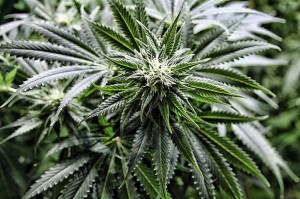
At this point in the marijuana calendar, your plants are two (2) months old and about 18 – 36 inches tall and starting to show their female white/pink hair-like pistils. Flowering males will begin to develop bell-shaped pollen sacks that will grow quickly.
Once you are able to identify male from female then you will want to keep a sinsemilla harvest so remove all males. If you want to have a seeded harvest you can leave them in the room.
If you want a partially seeded crop then you can harvest the male pollen sacks and pollinate only a few branches of a female plant while leaving the rest of the female flowers to remain sinsemilla.
If you want to clone from these plants now is the best time to do it since it will be easier now than later and you know which plants are female.
If there are continued signs of deficiencies or nutrient burn then you will need to change the fertilizers or leach the soil. If stress starts to show on your plants raise the lights, and increase air circulation, ventilation, and room humidity.
Watch out for soil that is drying out rapidly since this will cause damage to the plants’ roots. Leaves that are dead or over 50% damaged need to be removed and thrown away.
You can choose to prune plants that are shading other plants by moving them around or bending and tying plants down. If your plants have outgrown the use of only one light then you will want to add more lights to provide adequate lighting for all plants.
By adding more lights you will also increase your plant yielding. At this time, it is your last chance to spray your plants to get rid of any mold, fungus, or insects. During this time and through the next four (4) weeks your plants will produce THC and weight very rapidly.
Third Month – Week 11
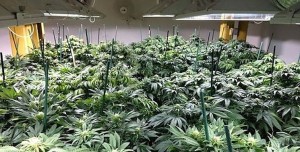
In week eleven (11) of your marijuana calendar growth, the tops of your plants will elongate and grow about 6 – 12 inches taller than two (2) weeks ago. You will continue to fertilize using flowering fertilizer.
Older leaves on your plants will begin to drop and die off faster due to a lack of nitrogen or if a High-Pressure Sodium (HPS) light is being used. Check all factors on the checklist, including mold.
Some shade-leaf yellowing is normal if all leaves are then there is a deficiency. If you are growing indica plants then they may be ready to harvest and sativa plants will not yet be ready, but you can harvest early-maturing buds.
Continue watering your plants as needed, but with no fertilizer. Be sure not to spray insecticides or fungicides since these will be bad for the buds and smoking.
Fourth Month – Week 12
The growth of your plants will be the same other than the buds will become larger and heavier. Continue watering your plants as needed, yet keep a watchful eye for “Bud Mold” (grey mold) to help prevent this and lower humidity.
Your garden will be ready to harvest between now and a week or two. When it is ready harvest it and clean it up. At this point, the clones that you took back in week nine (9) will have developed nice roots and are ready to start this cycle once again.
Let us know what you think.



